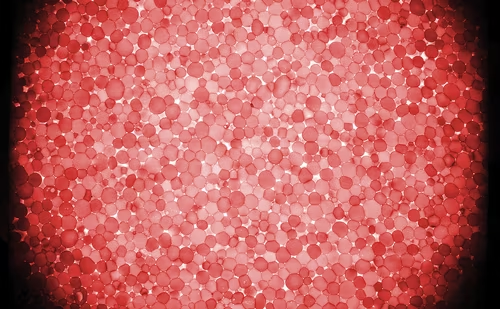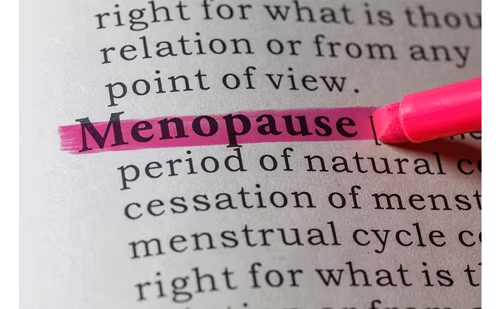In men, fertility persists until very old age; simulteously, an age-associated decrease in testosterone levels exhibiting a marked inter-individual variation is observed.1 Subnormal testosterone levels are not a general, but frequent feature of ageing men. This age-related deterioration of androgen production can be seen as a combined dysfunctionality of both the central and peripheral parts of the sex steroid regulation system, and is named ‘late-onset hypogonadism’ (LOH).
In men, fertility persists until very old age; simulteously, an age-associated decrease in testosterone levels exhibiting a marked inter-individual variation is observed.1 Subnormal testosterone levels are not a general, but frequent feature of ageing men. This age-related deterioration of androgen production can be seen as a combined dysfunctionality of both the central and peripheral parts of the sex steroid regulation system, and is named ‘late-onset hypogonadism’ (LOH). The direction as well as the weighting of pathological processes within such a dysbalance may vary, and LOH presents with low to low-normal testosterone concentrations and leutinizing hormone (LH) levels, which may be slightly decreased, normal or elevated. There is no clear-cut definition of age in relation to LOH. Usually described as a disease met in ‘ageing’ men, the nosology with its typical hormone constellations can also be found in men of ‘younger age’. In principal, it is a diagnosis made after exclusion of other causes for hypogonadism.2
A central clinical question is whether the decrease of androgen levels described as LOH translates physiologically. Such clinical evidence could be sought in similarities between the symptoms of men with LOH and symptoms of other hypogonadal men, as well as general symptoms of ageing men.3 In this regard, one has to be aware that ageing is most often accompanied by a decline of many physiological, cognitive and sexual functions, since the incidence and prevalence of chronic diseases affecting these parameters increases with ageing. Such chronic diseases are mainly atherosclerosis, diabetes mellitus and obesity. Thus, in view of the multifactorial origin of ageing symptoms, the effects of LOH may not clearly be detectable. However, evidence from hypogonadism in younger men suggests a range of androgen-dependent functions, for which an adverse affection by LOH can be assumed. The beneficial effects of testosterone substitution on these morbidities provide evidence for a significant role of androgens within the symptomatology of elderly men with LOH. These will be discussed presently.
Osteoporosis
Osteoporosis and fractures represent a major public health problem, not only in women but also in men. It has been estimated that at the age of 50 years, men have a risk of approximately 12–15% of suffering an osteoporotic fracture in later life, most commonly of the vertebra, hip or forearm. At the age of 60, the risk for a non-traumatic fracture rises to 25%.4 In the US, about 150,000 hip fractures occur in men each year.5 Because of their higher peak bone mass, men present with hip, vertebral body, or forearm fractures about 10 years later than women. Hip fractures in men result in a 30% mortality rate at one year after fracture versus a rate of 17% in women.6 Hypogonadism, that is androgen deficiency, has been identified as an independent risk factor for such incidences.7 Benefits of testosterone substitution in older men in terms of improvement of bone mass have repeatedly been demonstrated.8–10 It is essential that the naturally occuring testosterone molecule is used for substitution therapy, since estradiol as the aromatisation product of testosterone plays a pivotal and independent role in enhancing bone mass.11
Body Composition/Metabolic Syndrome/Cardiovascular Risk/Inflammation
Ageing is associated with changes in body composition: body fat mass is found to increase from around 22% of body weight in young men to around 30% in the elderly, while lean body mass is 30% lower in elderly men.12 Accordingly, changes with a decrease of lean body mass and increase in fat mass are observed in hypogonadal men compared with age- and body mass index (BMI)-matched controls.13 Thus, decreased androgen levels obviously contribute to changes in the body composition of elderly men. In agreement, body composition exhibits favourable shifts during androgen replenishment.10
Such evidence is related to the catchwords of this paragraph: these aspects relate to each other within a nosological complex increasingly observed in affluent countries and are connected not only to obesity and a sedentary lifestyle, but also to LOH. Type 2 diabetes mellitus is an increasing pathological entity and represents an established risk factor for the development of atherosclerotic vascular disease. Insulin resistance is the hallmark feature of type 2 diabetes and is simultaneously an important component of the metabolic syndrome, a pre-clinical condition also including high visceral fat content, arterial hypertension and an inflammatory status.
There is evidence to suggest that testosterone is an important regulator of insulin sensitivity in men. Observational studies have shown that testosterone levels are low in men with diabetes, visceral obesity, coronary artery disease and the metabolic syndrome. Regarding the age-related aspect of these morbidities, this is of special importance in men with LOH. Short-term interventional studies support the assumption that testosterone replacement therapy in hypogonadal men induces respective clinical improvements, also concerning inflammatory markers and cardiac status. Hypogonadism may play a role in the pathogenesis of insulin-resistant states and androgen replacement therapy could be a potential treatment for improvements in glycaemic control and reduction of cardiovascular risk, particularly in diabetic men.14–21 Nevertheless, long-term studies are required to determine the potentially beneficial role of testosterone in this regard.
Anaemia
Androgens increase erythropoiesis. This is facilitated by several pathways involving enhancement of erythropoietin secretion and independently promoting differentiation of erythroid progenitor cells. Correspondingly, hypogonadal men often present with anaemia. Testosterone substitution therapy in hypogonadal men restores red blood cell mass and, hence, oxygen supply.22 Under certain circumstances, polycythemia can be induced during androgen substitution, especially when supraphysiological concentrations of testosterone are reached or patients are older. Polycythaemia or elevated haematocrit represent a risk factor for cerebral ischaemia, while its role in relation to cardiovascular disease remains unclear. Thus, transdermal gel preparations are the more favourable treatment option for LOH.2,1,10,23
Spatial Cognition
Ageing is associated with deterioration of multiple aspects of cognitive performance. Studies in humans concerning the relationship between endogenous androgen levels and cognitive performance have produced evidence that abilities of spatial cognition are positively affected by testosterone, especially in older men with LOH, who exhibit lower visuospatial abilities than eugonadal controls.24 It has been demonstrated that testosterone substitution improves spatial cognition in hypogonadal men, which is an estradiol-independent effect.25,26 Cerebral imaging procedures suggest areas involved in processing of spatial information, such as the ventral processing stream to be actived by testosterone.27
Depression
Mood disturbances and dysthymia are frequently observed in older men and can be related to testosterone concentrations in cross-sectional approaches, such as the Massachusetts Male Aging Study.28 Correspondingly, a depressed mood is frequently observed in hypogonadal men, a situation that is managable by testosterone supplementation. Administration of testosterone can benefit both psychological aspects of depression (such as depressed mood, guilt and psychological anxiety) and somatic aspects of depression (such as sleep, appetite and libido)29. Mood changes in hypogonadal men improve early after institution of testosterone replacement, and this improvement is usually maintained at a plateau reached after two months. Overall, enhancement of positive mood aspects is more prominent than the decrease in negative mood parameters.10
Sexual Functions
Ageing in men is accompanied by a decrease in libido, as well as sexual activity, a process closely related to androgen concentrations.3 Sexual functions improve rapidly during testosterone replacement therapy in hypogonadal men, irrespective of their age, an effect that is not dose-dependent. The improvements affect all aspects of sexual life, including motivation, performance and activity.10,30
Arterial integrity is a key component for penile caver-nous vasodilation, a process leading to erection and directly regulated by androgens. It has been demon-strated that erectile dysfunction is an early marker of cardiovascular events.31,32 Especially in hypogonadal patients, the therapeutic approach with phospho-diesterase type 5 (PDE-5)-inhibitors often proves unsuccessful. There is some evidence that additional testosterone treatment in men with erectile dysfunction and low androgen levels is synergistic to PDE-5 inhibitors.33-35 Men with LOH and diabetes mellitus type 2 are especially likely to benefit from testosterone substitution in regard to erectile function.36
Conclusions
Summarizing the data concerning the association of LOH with clinical signs and symptoms in elderly males, it is manifest that a clinical significance exists. Nevertheless, in many instances data quality is weak, and androgen levels are only one of the many factors determining the symptomatology of elderly men. Therapeutic approaches with testosterone preparations are recommended in cases of low testosterone levels in connection with the above-named symptom complexes. Special recommendations for the treatment of older men are available.1 ■







